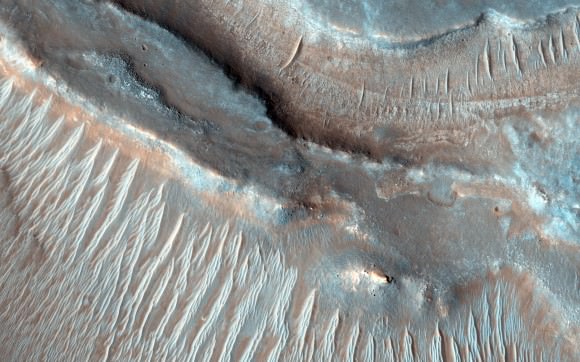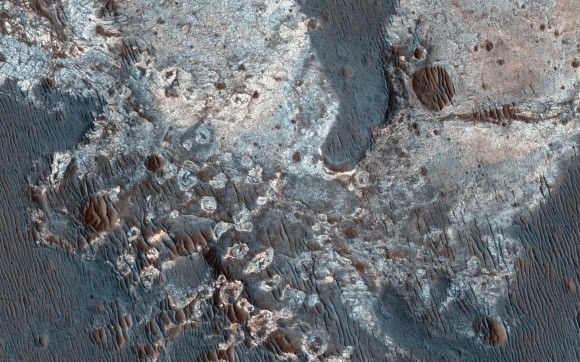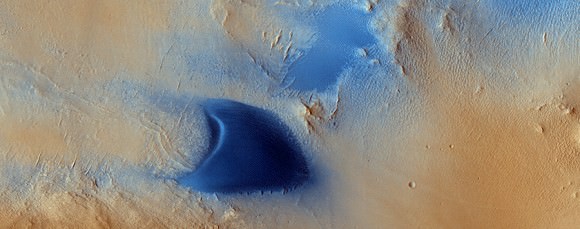NASA is puzzled by this “enigmatic landform” caught on camera by one of its Mars orbiters, but looking around the region provides some possible clues. This 1.2-mile (2-kilometer) feature is surrounded by relatively young lava flows, so they suspect that it could be some kind of volcanism in the Athabasca area that created this rippled surface.
“Perhaps lava has intruded underneath this mound and pushed it up from beneath. It looks as if material is missing from the mound, so it is also possible that there was a significant amount of ice in the mound that was driven out by the heat of the lava,” NASA wrote in an update on Thursday (Dec. 4).
“There are an array of features like this in the region that continue to puzzle scientists. We hope that close inspection of this … image, and others around it, will provide some clues regarding its formation.”
The picture was captured by the Mars Reconnaissance Orbiter’s High Resolution Imaging Science Experiment (HiRISE), a University of Arizona payload which has released a whole slew of intriguing pictures lately. We’ve collected a sample of them below.





These images are just so way double extre groovy cool I can’t get enough! Thanks for the intrigue Elizabeth.
I zoomed in on all of em.. WOW!
Did Lava Bubbles Wrinkle This Giant Circle? – No, these were Aliens. They used Mars as a scratch pad before they came down here to Earth to create their Crop Circles. That’s why down here they look perfect… on Mars they were just testing 😉
It looks like a meteorite hit when the crust was semi-molten or molten close to the surface.